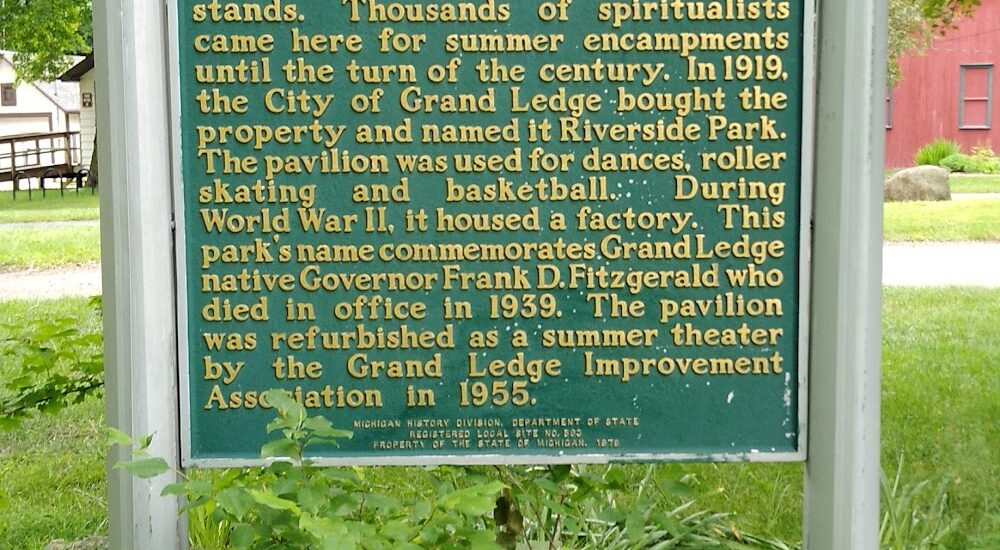Welcome to the State of Michigan Historical Marker in Grand Ledge, a proud symbol of Michigan’s rich and diverse history. As you stand here, imagine the stories of the past coming to life. The Michigan Historical Marker Program, established by Public Act 10 of 1955, has placed over 1,800 markers across the state, each telling a unique story about the people and events that shaped Michigan. This program is a testament to the community’s commitment to preserving its history and serves as an enduring resource for education and tourism.
Grand Ledge, known for its striking sandstone ledges along the Grand River, has a history as vibrant as its natural landscape. The city was named for these spectacular natural formations which rise 40 feet above the river. It was originally inhabited by Native American tribes, including the Pottawatomi, Chippewa, and Ottawa, who thrived here by fishing, hunting, and gathering.
In 1847, Henry Trench settled in what would later become downtown Grand Ledge. By 1850, the town had grown enough to establish a post office and officially adopted the name Grand Ledge. The arrival of the Flint & Pere Marquette Railroad in 1869 spurred further growth, transforming the town into a popular resort destination during the 1870s. Visitors flocked to the Seven Islands Resort, enjoying amenities like the Island House Hotel, built by S.M. Hewings in 1878.
One of the most intriguing historical tales from Grand Ledge is that of the ‘Round House’. Built by Julian Scott Mudge in 1880, this three-story pagoda tower was designed with a rotating second story and a faster rotating third story, topped with a swing that would whirl riders out over the river. Though the Round House was damaged by a flood in 1893, its innovative design remains a testament to the creative spirit of the era.
Today, Grand Ledge continues to honor its past while embracing the present, with its historical sites serving as a bridge between these two worlds. Whether you’re a local or a visitor, the stories encapsulated in these markers offer a fascinating glimpse into Michigan’s historical tapestry.






